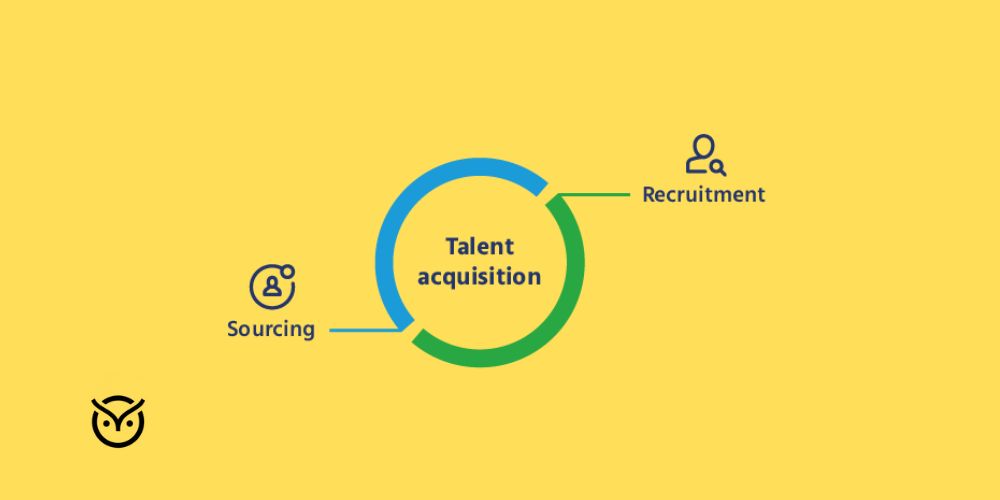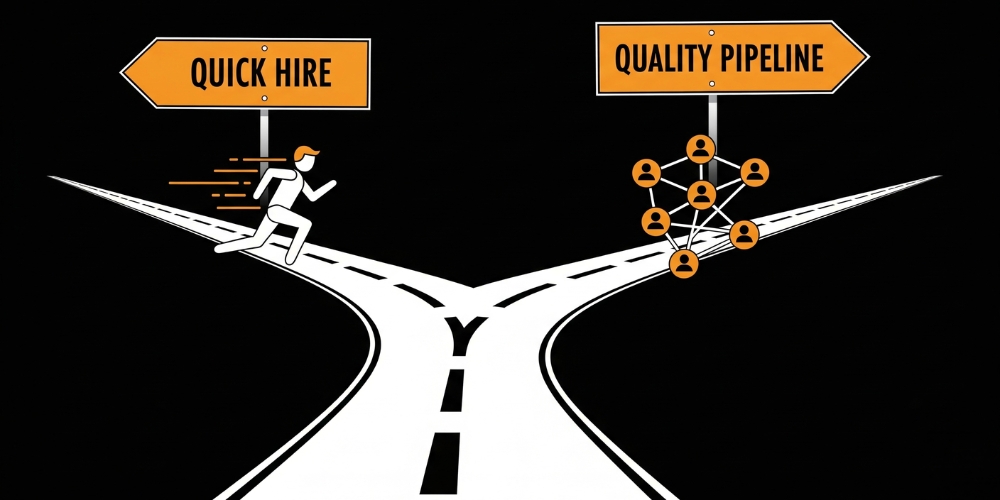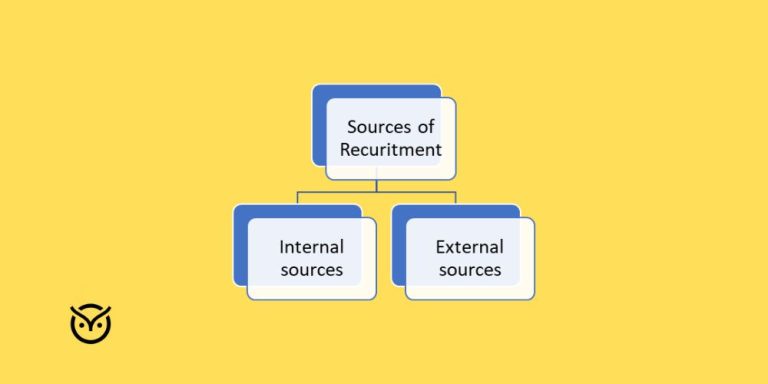The Difference Between Active Sourcing Strategies and Passive Sourcing

TL;DR
- Active sourcing strategies = proactively reaching out to candidates
- Passive sourcing = engaging talent who are not actively job hunting
- Many recruiters combine both to maximize reach
- Trade-offs exist: time, cost, and yield differ
- Knowing when to use each is key to a strong talent sourcing plan
Finding great people today feels like mining for gold in a field of stones. Jobs get posted, responses trickle in, but often you miss high-quality candidates who never saw your ad, or you waste time chasing leads that go nowhere. In this noisy market, relying only on job boards is no longer enough.
That’s why the active sourcing strategy is rising. This blog will walk you through what active vs passive sourcing means, how candidate sourcing works in each case, how to blend both, and when one makes more sense than the other. By the end, you’ll have a clearer idea of how to upgrade your recruitment sourcing methods and start sourcing candidates with confidence.
What Is Active Sourcing and How Does It Work?

Active sourcing strategies involve reaching out to potential hires directly rather than waiting for them to come to you. It’s like casting a net where you believe the best fish are, rather than waiting. In recruiting, that means searching, contacting, and engaging people who may or may not already know about your job.
How It Works
- Define your ideal profile. Identify the skills, experience, location, and traits you’re after.
- Use sourcing tools & channels. Leverage LinkedIn search, niche communities, GitHub, tech forums, Boolean strings, resume databases, etc.
- Reach out proactively. Send a personalized message or pitch, not a generic “we have a job” email, but something relevant to what the candidate already does.
- Engage and qualify. Ask questions, share aspects of company culture, see if there’s interest, and schedule a conversation.
- Nurture relationships. Even if someone isn’t ready today, you might keep them warm for future roles.
Active sourcing is one of the ways of sourcing candidates that gives you more control over who you engage. You’re not waiting; you’re hunting.
A recent survey showed that 77% of talent leaders say active sourcing is vital, though many still rely heavily on inbound hires.
Because of its forward approach, active sourcing is often considered a core tactic in strategic candidate sourcing.
Recruiter’s Reality Check
Three quick questions with instant feedback. Check your sourcing basics in under 30 seconds.
Q1. What is the main goal of active sourcing?
Q2. Which is a clear example of active sourcing?
Q3. What makes outreach more effective in active sourcing?
What Is Passive Sourcing and Why Is It Different?

Passive sourcing means engaging talent who are not actively job searching. These are people comfortable in their roles but open to the right opportunity. Recruiting passive candidates is about creating interest, not responding to demand.
Unlike active sourcing, passive sourcing is less about “hunt now” and more about building visibility, relationships, and credibility over time.
Key Differences
- With active sourcing, you initiate; with passive sourcing, you nurture.
- Active is high effort per candidate; passive is more long game, brand-driven.
- Passive candidates often bring stability and sophistication. They’re not desperate.
- Passive sourcing leans heavily on employer branding, content, community, referrals, and network effects.
A commonly cited figure says 70–73% of candidates are passive (i.e., not actively applying).
Because of that, passive sourcing is a critical part of any talent sourcing strategy. If you only chase active applicants, you may miss 7 out of 10 potential hires.
Also, firms that succeed in recruiting passive candidates often see 40% lower turnover and 20% faster time to productivity than those that mostly hire active candidates.
Myth or Fact: Passive Sourcing
Tap or click any card to reveal the truth.
How Do Recruiters Mix Up Active and Passive Sourcing?

Recruiters often blur the line between active sourcing strategies and passive sourcing without realizing it. A hiring team may post a job (a passive move) and then immediately start messaging people on LinkedIn (an active step). It’s not wrong, just mixed.
Many organizations use a hybrid sourcing strategy where outbound and inbound methods feed each other. For example:
- They might run personal sourcing campaigns that directly reach professionals through social media while using blog content to attract them later.
- A recruiter could spot a great profile during an active sourcing strategy search, send an email, and then add that candidate to a talent sourcing newsletter for future openings.
- Passive outreach also supports strategic candidate sourcing by keeping your company top-of-mind among experienced professionals who might not be ready now but will be later.
This approach helps build a consistent talent sourcing strategy, combining relationship-building with precision targeting.
Drag & Drop Sourcing Sorter
Drag each tactic into the right category — then hit “Check Order” to see how you did.
What Are the Pros and Cons of Active Sourcing and Passive Sourcing?

Below is a simple table comparing both methods, so you can see how sourcing strategies complement each other rather than compete.
Pros and Cons: Active vs Passive Sourcing
Quick view comparing Active Sourcing Strategies with Passive Sourcing.
| Aspect | Active Sourcing Strategies | Passive Sourcing |
|---|---|---|
| Approach | Recruiters proactively source candidates through direct outreach, Boolean searches, or referrals. | Recruiters focus on attracting talent through brand awareness and long-term engagement. |
| Speed | Faster results, especially for hard-to-fill or technical roles. | Slower to yield results but builds long-term pipelines. |
| Candidate Type | Often active job seekers or open to offers. | Professionals not actively job hunting — ideal for recruiting passive candidates. |
| Cost | Requires more recruiter time and specialized tools. | Lower upfront cost but needs consistent content and community investment. |
| Scalability | Can be scaled with automation and AI sourcing tools. | Scales through employer branding and candidate attraction strategy. |
| Conversion Rate | Usually higher for urgent roles. | Higher retention and quality once hired. |
| Example Channels | Job boards, GitHub, Stack Overflow, email outreach, job sourcing tools. | Career pages, alumni networks, social engagement, employee referrals. |
Both methods have their place. One fills roles quickly; the other builds depth in your best talent pipeline strategies in recruitment process outsourcing.
When Should Recruiters Choose Active Over Passive (and Vice Versa)?

There’s no single rule, but a few patterns help.
Choose active sourcing when:
- You have urgent roles or specialized skill gaps.
- You’re hiring in competitive fields like data science or cybersecurity.
- You need to source candidates fast and cannot rely on inbound interest.
Choose passive sourcing when:
- You’re building a brand for the long haul.
- You want to strengthen recruiting sources such as alumni, internal referrals, or career events.
- Your market is stable, and you want quality over quantity.
Balancing short-term action (active) with long-term magnetism (passive) ensures your recruitment sourcing methods remain sustainable through changing hiring demands.
How Can Recruiters Balance Active and Passive Sourcing Effectively?

The best teams don’t pick sides. They blend. Here’s how:
- Segment your efforts. Assign half your weekly time to active sourcing strategies like personalized outreach and the other half to sourcing tactics such as nurturing passive candidates.
- Automate wisely. Use sourcing techniques recruitment tools to automate repetitive tasks, freeing time for personal follow-ups.
- Keep data tight. Track open rates, response rates, and pipeline status to measure ROI.
- Integrate content with outreach. Share posts, insights, and behind-the-scenes moments that reflect culture, as it fuels your candidate attraction strategy.
- Create learning loops. Review which sourcing techniques for recruiters are producing better responses and refine based on data.
Conclusion
Active and passive sourcing aren’t rivals. They’re teammates. Think of active sourcing strategies as sprinting and passive sourcing as endurance training. One delivers quick wins; the other builds staying power.
Recruiters who master both will always have an edge: a strong pipeline, better-quality hires, and a smoother candidate experience.






